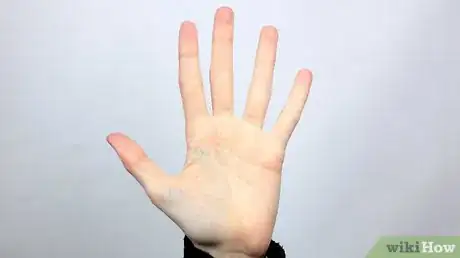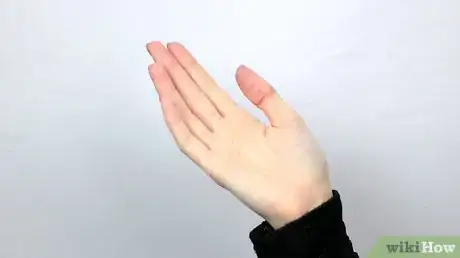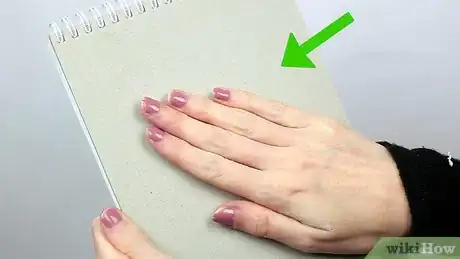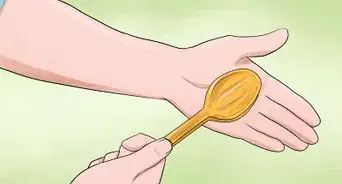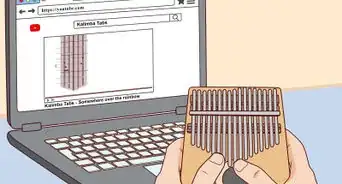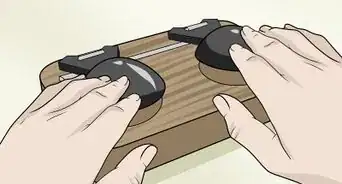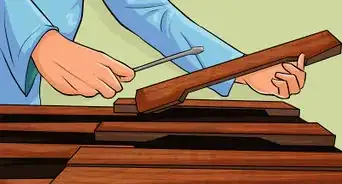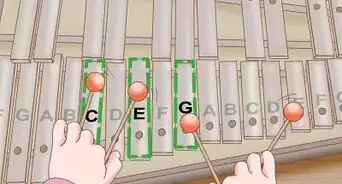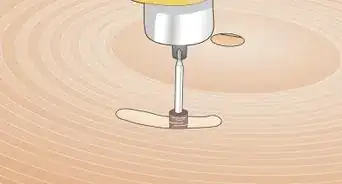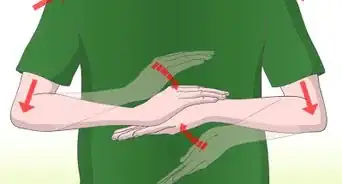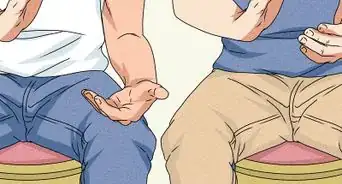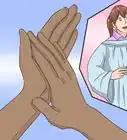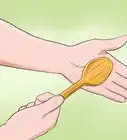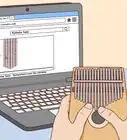This article was co-authored by wikiHow Staff. Our trained team of editors and researchers validate articles for accuracy and comprehensiveness. wikiHow's Content Management Team carefully monitors the work from our editorial staff to ensure that each article is backed by trusted research and meets our high quality standards.
This article has been viewed 115,572 times.
Learn more...
There are many ways to show your appreciation for something, even when you don't have both of your hands free. These options are particularly useful when you are at events where not clapping would appear rude or ungrateful, such as a live performance. Clapping with one hand certainly takes practice, but can come in very "handy" when you are holding items, have a wrist or hand injury, or have one hand otherwise occupied.
Steps
Clapping with One Hand
-
1Extend the palm of your dominant hand. Maintain a comfortable, relaxed hand position and keep your fingers spread.
-
2Quickly extend your fingers and snap them into the palm of your hand. Focus on extending your fingers nice and wide before each snap.Advertisement
-
3Practice repeating this motion several times in sequence. The goal is to create an audible clapping noise each time your hand comes together.
-
4Repeat this motion with your non dominant hand. Once you have perfected the noise with both hands, you can even try clapping both at the same time.
Snapping Your Fingers
-
1Press your thumb and middle finger of the same hand together. Apply as much pressure as you can without hurting either finger.
-
2Relax all other fingers but keep your wrist straight and still. Your wrist is only used for support and you won't use your other fingers at all.
-
3Quickly slide your middle finger off your thumb, causing your middle finger to strike the palm of your hand. Because your middle finger and thumb were pressed together, this should happen quickly and result in a “snap” sound.
-
4Repeat the snapping motion for the duration of the time you wish to be "clapping."[1]
Using a Second Surface
-
1Open the palm of your hand, as you would if you had both your hands free to actually clap. Maintain a relatively relaxed hand position.
-
2Find a second surface available. This could be your leg, the program you are holding in your other hand, or something else that is near you.
- Try to have this surface chosen before the need to clap arises. This will help you clap smoothly instead of appearing frantic as you find something to use.
- Don't use anything that will disturb another person, such as a shared armrest that might shake their chair.
-
3Repeatedly strike the second surface with your open palm. It should be hard enough to create noise, but not hard enough to break anything or hurt (if the second surface is your thigh.)
Warnings
- Do not try this if you have a very sensitive hand or wrist.⧼thumbs_response⧽
- Don't try these if you have recently had a hand injury.⧼thumbs_response⧽
References
- ↑ https://www.youtube.com/watch?v=Oo3cKxlkQZc
- Videos provided by Darren Drouin
